A new article of mine just came out in the Communications of the ACM. An alert reader notified me that the article is behind a paywall — not available to those without subscriptions. Luckily, Communications is a fine humane publication and agreed to let me keep copyright in the article. Here it is.. My thanks to the editors of Communications and particularly to Moshe Vardi
What Intellectual Property Law Should Learn from Software
Software’s close encounters with the law provide some lessons for our future.
Credit: Communications of the ACM
At first, the use of copyright stirred the most concern. Copyright is built around an assumption of diverging innovation, the fountain or explosion of expressive activity. Different people in different situations who sit down to write a sonnet or love story, it is presumed, will produce very different results rather than be drawn to a single result. Thus, strong rights over the resulting work are not supposed to inhibit future progress. I can find my own muse, my own path to immortality. Creative expression is presumed to be largely independent of the work of prior authors. Raw material is not needed.
There are lots of reasons to doubt that this vision of “creation out of nothing” works very well, even in the arts, the traditional domain of copyright law.4 But whatever its merits or defects in the arts, it seems completely wrong-headed when it comes to software. Software solutions to practical problems do converge, and programmers definitely draw upon prior lines of code. Worse still, software tends to exhibit “network effects.” Unlike my choice of novel, my choice of word-processing program is strongly influenced, perhaps dominated, by the question of what program other people choose to buy. That means that even if a programmer could find a completely different way to write a word-processing program, this programmer has to be able to make it read the dominant program’s files and mimic its features if the programmer is to attract any customers at all. This hardly sounds like completely divergent creation.
Seeing the way software failed to fit this Procrustean bed of copyright, many scholars presumed the process of forcing it into place would be catastrophic. They believed that, lacking patent’s high standards, copyright’s monopolies would proliferate. Copyright’s treatment of follow-on, or “derivative,” works would impede innovation, it was thought. The force of network effects would allow the copyright holder of whatever software became “the standard” to extract huge monopoly rents and prevent competing innovation for many years longer than the patent term. Users of programs would be locked in, unable to shift their documents, data, or skills to a competing program. Doom and gloom abounded among copyright scholars, including many who shared the premise that software should be covered by property rights. They simply believed that these were the wrong property rights to use.
Copyright did indeed cause problems for software developers, though it is difficult to judge whether they outweighed the economic benefits of encouraging software innovation, production, and distribution. But the negative effects of copyright were minimized by a remarkably prescient set of actions by courts and, to a much lesser extent Congress, so the worst scenarios did not come to pass. Courts interpreted the copyright over software narrowly, so it covered little beyond literal infringement. They developed a complicated test to work out whether one program infringes the details of another program.a The details give law students headaches, but the effects were simple. If your software is similar to mine merely because it performed the same function or because I picked the most efficient way to perform some task or even because there was market demand for doing it that way, then none of those similarities counted for the purposes of infringement. Nor did material that was taken from the public domain. The result was that while someone who made literal copies of Windows Vista was clearly infringing copyright, the person who made a competing program generally would not be.
For some time, the U.S. Court of Appeals for the Federal Circuit (the leading patent court in the U.S.) has seemed to believe that computers can turn an unpatentable idea into a patentable machine.
In addition, courts interpreted copyright’s fair-use doctrine to cover something called “decompilation,” basically taking apart someone else’s program so you can understand and compete with it.b As part of the process, the decompiler had to make a copy of the program. If the law were read literally, decompilation would hardly seem a fair use. The decompiler makes a whole copy, for a commercial purpose, of a copyrighted work, precisely in order to cause harm to its market by offering a substitute good. But the courts took a broader view. The copy was a necessary part of the process of producing a competing product, rather than a piratical attempt to sell a copy of the same product. This limitation on copyright provided by fair use was needed in order to foster the innovation that copyright is supposed to encourage.
These rulings and others like them meant that software was protected by copyright but also that the copyright did not give its owner the right to prevent functional imitation and competition. Is that enough? Clearly the network effects are real. Most of us use Windows and Microsoft Word, and one very big reason is because everyone else does. Optimists believe that the lure of capturing this huge market will keep potential competitors hungry and monopolists scared. The lumbering dominant players, goes the argument, will not become complacent about innovation or try to grab every morsel of monopoly rent. They still have to fear their raptor-like competitors lurking in the shadows. Perhaps. Or perhaps it also takes the consistent threat of antitrust enforcement. In any event, whether or not we hit the optimal point in protecting software with intellectual property rights, these rights certainly did not destroy the industry. It appeared that, even with convergent creativity and network effects, software could be crammed into the Procrustean bed of copyright without killing it off in the process. Indeed, to some, it seemed to fare quite well. They would claim that the easy legal protection provided by copyright gave a nascent industry just enough protection to encourage the investment of time, talent, and dollars, while not prohibiting the next generation of companies from building on the innovations of the past.
In addition, the interaction between copyright and software has produced some surprising results. There is a strong argument that it is the fact that software is copyrightable that has enabled the “commons-based creativity” of free and open source software.3 What is commons-based creativity? Basically it is creativity that builds on an open resource available to all. An additional component of some definitions is that the results of the creativity must be fed back into the commons for all to use. Think of English. You use it without license or fee, and you innovate by producing new words, slang, or phrases without clearance from some Academie Anglaise. After you coin your term, it is in turn available to me to build upon or use in my own sentences, novels, or jokes. And so the cycle continues. But with words we have commons-based creativity because there were no property rights over the relevant material. The software commons is different.
The creators of free and open source software were able to use the fact that software is copyrighted and that the right attaches automatically on creation and fixation to set up new distributed methods of innovation. For example, free and open source software under the General Public License (such as Linux) is a “commons” to which all are granted access. Anyone may use the software without restriction. All are guaranteed access to the human-readable source code, rather than just the inscrutable machine code, so they can understand, tinker, and modify. Modifications can be distributed so long as the new creation is licensed under the open terms of the original. This creates a virtuous cycle whereby each addition builds on the commons and is returned to it. The copyright over the software is the “hook” that allowed software engineers to create a license that gave free access and the right to modify, and required future programmers to keep offering these freedoms. Without the copyright, those features of the license would not have been enforceable. For example, someone could have modified the open program, releasing it without the source code, thus denying future users the right to understand and modify easily. To use an analogy beloved of free-software enthusiasts, the hood of the car would be welded shut. Home repair, tinkering, customization, and redesign become practically impossible.
If there were no copyright over software at all, software engineers would have other freedoms, even if not legally guaranteed open access to source code. Still, it is difficult to deny that the extension of the property regime had—bizarrely, at first sight—actually enabled the creation of a continuing open commons. The tempting real-estate analogy would be environmentalists using strong property rights over land to guarantee conservation and open access to a green space, whereas without property rights, the space could be despoiled by all.
So much for copyright. What about patents? U.S. patent law had customarily drawn a firm line between patentable invention and unpatentable idea, formula, or algorithm. The mousetrap could be patented, but not the formula used to calculate the speed at which it snaps shut. Ideas, algorithms, and formulae were in the public domain, as were “business methods.” Or so we thought.
The line between idea or algorithm on the one hand and patentable machine on the other looks nice and easy. But put that algorithm into a computer and things begin to look more complex. Say, for example, the algorithm was the process for converting miles into kilometers and vice versa. In the abstract, this is classic public-domain stuff, no more patentable than E = mc2 or F = ma. What about when those steps are put onto the tape of the Turing machine, onto a program running on the hard drive of a computer?
For some time, the U.S. Court of Appeals for the Federal Circuit (the leading patent court in the U.S.) has seemed to believe that computers can turn an unpatentable idea into a patentable machine. In fact, in this conception, the computer sitting on your desk becomes multiple patentable machines—a word-processing machine, an email machine, a machine running the program to calculate the tensile strength of steel. I want to stress that the other bars to patentability remain. My example of miles-to-kilometers conversion would be patentable subject matter, but, we hope, no patent would be granted because the algorithm is not novel and is obvious. (Though sadly, the PTO seems determined to undermine this hope by granting patents on the most mundane and obvious applications; two excellent books by Besson and Meurer2 and by Jaffe and Lerner5 explore this point, as well as other deeper problems with the patent system.) But the concern here is not limited to the idea that, without a subject-matter bar, too many obvious patents will be granted by an overworked and poorly incentivized patent office. It is that the patent was supposed to be granted at the very end of a process of investigation and scientific and engineering innovation. The formulae, algorithms, and scientific discoveries on which the patented invention was based remained in the public domain for all to use. It was only when we got to the very end of the process, with a concrete innovation ready to go to market, that the patent was to be given. Yet the ability to couple the abstract algorithm with the concept of a Turing machine undermines this conception. Suddenly the patents are available at the very beginning of the process, even to people who are merely specifying, in the abstract, the idea of a computer running a particular series of algorithmic activities.
The words “by means of a computer” seem to be an incantation of magical power, able to transubstantiate the ideas and formulae of the public domain into private property.c And, like the breaking of a minor taboo that presages a Victorian literary character’s slide into debauchery, once that first wall protecting the public domain was breached, the courts found it easier and easier to breach still others. If one could turn an algorithm into a patentable machine (by simply adding “by means of a computer”), then could one not turn a business method into something patentable by specifying the organizational or information technology structure through which the business method is to be implemented?
You might wonder why we would want to patent business methods. Intellectual property rights are supposed to be handed out only when necessary to produce incentives to supply some public good, incentives that otherwise would be lacking. Yet there are already plenty of incentives to come up with new business methods. (Greed and fear are the most obvious.) There is no evidence to believe we need a state-backed monopoly to encourage the development of new business methods. In fact, we want people to copy the businesses of others, lowering the price as a result. The process of copying business methods is called “competition” and is the basis of a free-market economy. Yet patent law would prohibit it for 20 years. So why introduce patents? Brushing aside such minor objections with ease in 1998, in a case called State Street, the Court of Appeals for the Federal Circuit declared business methods to be patentable.d Could this really be what Thomas Jefferson had in mind when he said “I know well the difficulty of drawing a line between the things which are worth to the public the embarrassment of an exclusive patent, and those which are not”?e I doubt it.
In 2008, the Court of Appeals for the Federal Circuit revisited this ruling in a case called In re Bilski.f Perhaps made wary by several spankings they had recently received at the hands of the U.S. Supreme Court for “creatively interpreting” prior Supreme Court precedent, a majority of the Court of Appeals overturned a portion of the State Street decision. They declared that, to be patentable, an algorithm or method must result in some transformation or be embodied in some machine, rejecting State Street’s more forgiving language, which looked only for some “useful, concrete and tangible result.”g Patent lawyers too, it seems, have their own metaphysical debates.
But what is the result of all this abstraction? Are business methods patentable? Can an algorithm implemented by a Turing machine thereby be patented? To see how differently Bilski could be viewed, one need only compare two of the dissents. Judge Newman lamented the court’s action in restricting patentability and undermining the provision of incentives to meet “the infinite needs of the future”: “It is antithetical to this incentive to restrict eligibility for patenting to what has been done in the past, and foreclose what might be done in the future.”h Reading the opinion one could almost forget that people have been coming up with business methods all over the world for thousands of years without patent protection, or that having too many patents can be just as harmful to innovation as having too few. Judge Mayer strongly disagreed. “Patenting business methods allows private parties to claim exclusive ownership of ideas and practices which rightfully belong in the public domain…. The patent system is intended to protect and promote advances in science and technology, not ideas about how to structure commercial transactions.”i In his view, the Bilski court was too tame. They had not flatly declared business methods unpatentable, merely changed the metaphysical terms in which those patents needed to be couched. The Supreme Court has granted certiorari, meaning that it will hear an appeal of the decision some time in the next year.
The words “by means of a computer” seem to be an incantation of magical power, able to transubstantiate the ideas and formulae of the public domain into private property.
The Bilski case highlights a larger point. It is commonplace for courts to look at the purpose of the law they are enforcing when seeking to understand what it means. In areas of regulation that are obviously “instrumental”—aimed at producing some particular result in the world—this approach is ubiquitous. In applying the antitrust laws, for example, courts have given meaning to the relatively vague words of the law by turning to economic analysis of the likely effects of different rules on different market structures.
Patent law is as instrumental a structure as one could imagine. In the U.S., for example, the constitutional authorization to Congress to make patent and copyright legislation is very explicit that these rights are to be made with a purpose in view. Congress has the power “to promote the progress of science and useful arts, by securing for limited times to authors and inventors the exclusive right to their respective writings and discoveries.”j One might imagine that courts would try to interpret the patent and copyright laws with that purpose firmly in mind. Yet utilitarian caution about extending monopolies is seldom found in the reasoning of the U.S.’s chief patent court. Until Bilski, the court had preferred to quote a phrase from a congressional report that patentable subject matter includes “anything under the sun that is made by man.”k
The difference is striking. Jefferson said that the job of those who administered the patent system was to see if a patent was worth the embarrassment to the public before granting it. The Constitution tells Congress to make only those patent laws that “promote the progress of science and useful arts.” One might imagine that this constitutional goal would guide courts in construing the same laws. Yet in our chief patent court for the past 20 years, neither Jeffersonian ideals nor the constitutional text has seemed relevant to its thinking when interpreting statutory subject matter. Anything under the sun made by man is patentable subject matter, and there’s an end to it. The case that announced the rule on business methods involved a patent over the process of keeping accounts in a “hub-and-spoke” mutual fund, including multiplying all of the stock holdings of each fund in a family of funds by the respective current share price to get total fund value, then dividing by the number of mutual-fund shares that each customer actually holds to find the balance in their accounts.l As my son observed, “I couldn’t do that until nearly the end of third grade!”
In theory of course, if the patent is not novel or obvious, it will still be refused. The Supreme Court recently held that the Court of Appeals for the Federal Circuit made “non-obvious” too easy a standard to meet.m It is unclear, however, whether this judgment will produce concrete effects on actual practices of patent grants and litigation. The PTO’s system puts pressure on examiners to issue patents, and it is very expensive to challenge those that are granted. Better would be, where possible, to rule out certain subject matter (such as business methods) in the first place and more narrowly craft software patents so as to avoid the dangers the copyright decisions anticipated so clearly. Judge Mayer is right. Tempted in part by the power of the metaphor of “idea made machine” in the context of a computer, the Court of Appeals for the Federal Circuit has not been able to bring itself to do so. Where copyright law evolved to wall off, encyst, and minimize the dangers of extending protection over software, patent law initially extended the idea behind software patents to make patentable any thought process that might produce a useful result. Even when it got rid of the “useful result” language, the court was unable to bring itself to declare business methods unpatentable. Once breached, the walls protecting the public domain in patent law show a disturbing tendency to erode at an increasing rate.
To sum up, the conceptual possibilities presented to copyright and patent law by software were fascinating. Should we extend copyright or patent to cover the new technology? The answer was “We will extend both!” Yet the results of the extension were complex and unexpected in ways we should try to understand if we want to predict the effect of intellectual property on future technologies. Who would have predicted that software copyrights could be used to create a self-perpetuating commons, as well as a monopoly over operating systems, or that judges would talk knowingly of network effects in curtailing the scope of coverage? Who would have predicted that patents would be extended not only to basic algorithms implemented by a computer but to methods of business themselves? (Truly, a strange return to legalized business monopolies for a country whose founders viewed them as one of the greatest evils that could be borne.) The rest of the world has (wisely) been resistant to granting patents over business methods, and even to so-called “pure” software patents. (The empirical evidence, of which there is far too little, suggests that expansive software patents may actually have a negative effect on research and development.1) Yet as global legal harmonization sweeps onward, little attention is being paid to empirical evidence, and it is not clear which way the norms will tip. Our attitude should be to demand rigorous empirical and economic study before we create or extend legal monopolies. Expansive new rights over emerging technologies may be necessary to encourage innovation, but the case must be made on facts, not faith.
What can we learn from this history? First, we should realize that the mere decision to include a technology within a property regime is only the first in a sequence. As the copyright system showed with software, it is possible to trim protection so as to minimize overreaching. As the business-method patent decisions show us, we don’t always do it. Second, we should understand that we have some new methods of combining property rights and an open “commons” of raw material. The experience of free and open source software should be studied to see whether it has implications for new technologies. We need all the innovation tools we can get. Third, we should be mindful of the fact that much depends on the moment in the development of a technology when property rights begin to be rigorously applied. For better or for worse, property rights came fully to software at a point when no one would have thought of claiming the most fundamental building blocks—patenting the idea of a Turing machine or the precepts of Boolean algebra. The basics of the field were there for all to build upon. Will that be true with future technologies?
It is disquieting to realize that today the answer to this question is very difficult to provide. In one particular area, synthetic biology, which shares aspects of both software (programming in genetic code) and genetic engineering, there is considerable reason for alarm. As my colleague Arti Rai, and I note in an article on the subject,7 it is quite possible to imagine a perfect storm in which the expansive patent law decisions of the past 20 years do to synthetic biology what they could not do to software—lock up the basic building blocks before the field can develop.
The fundamental ideas behind our intellectual property system are sound. Intellectual property rights can be important, even vital, for the development of a particular area of technology. But it is just as easy to harm innovation with rights that are too strong as too weak. The example of software could teach us a lot about the future of good intellectual property policy in high technology, but first we need to pay attention to it.
https://twitter.com/thepublicdomain
References
1. Bessen, J. and Hunt, R.M. An empirical look at software patents. Journal of Economics and Management Strategy 16, no. 1 (Spring 2007), 157–189.
2. Bessen, J. and Meurer, M.J. Patent Failure: How Judges, Bureaucrats, and Lawyers Put Innovators at Risk. Princeton University Press, Princeton, NJ, 2008.
3. Boyle, J. The Public Domain: Enclosing the Commons of the Mind. Yale University Press, New Haven, CT, 2008, 185–194.
4. Boyle, J. Shamans, Software, and Spleens: Law and the Construction of the Information Society. Harvard University Press, Cambridge, MA, 1996.
5. Jaffe, A. and Lerner, J. Innovation and Its Discontents: How Our Broken Patent System Is Endangering Innovation and Progress, and What To Do About It. Princeton University Press, Princeton, NJ, 2004.
6. Samuelson, P., Davis, R., Kapor, M.D., and Reichman, J.H. A manifesto concerning the legal protection of computer programs. Columbia Law Review 94, no. 8 (December 1994), 2308–2431.
7. Rai, A. and Boyle, J. Synthetic biology: Caught between property rights, the public domain, and the commons. PLoS Biology 5, no. 3 (March 2007): 389–393; https://www.plosbiology.org/article/info%3Adoi%2F10.1371%2Fjournal.pbio.0050058 ![]() .
.
Footnotes
a. See, for example, Computer Assocs. Int’l, Inc. v. Altai, Inc., 982 F.2d 693 (2d Cir. 1992).
b. See, for example, Sega Enters. Ltd. v. Accolade Inc., 977 F.2d 1510 (9th Cir. 1992).
c. See, for example, In re Alappat, 33 F.3d 1526 (Fed. Cir. 1994); in light of the other cases discussed here, it is a contested issue which parts of this decision survive today.
d. State St. Bank & Trust Co. v. Signature Fin. Group, Inc., 149 F.3d 1368 (Fed. Cir. 1998).
e. Letter from Thomas Jefferson to Isaac McPherson (August 13, 1813) in The Writings of Thomas Jefferson, vol. XIII, A.E. Bergh, ed. The Thomas Jefferson Memorial Association of the United States, Washington, D.C., 1907, 326–338; see p. 335 at https://memory.loc.gov/ammem/collections/jefferson_papers/mtjser1.html ![]() and follow the “May 1, 1812” hyperlink, then navigate to image 1057.
and follow the “May 1, 1812” hyperlink, then navigate to image 1057.
f. In re Bernard L. Bilski, 545 F.3d 943 (Fed. Cir. 2008).
g. State Street, 149 F.3d at 1373.
h. In re Bilski, 545 F.3d at 998 (Newman, J., dissenting).
i. In re Bilski, 545 F.3d at 998, 1007 (Mayer, J., dissenting).
j. U.S. Constitution, art. I, § 8, cl. 8.
k. S. Rep. No. 1979, 82d Cong., 2d Sess., 5 (1952); H.R.Rep. No. 1979, 82d Cong., 2d Sess., 6 (1952).
l. State Street, 149 F.3d at 1373.
m. KSR Int’l Co. v. Teleflex Inc., 550 U.S. 398 (2007).
DOI: https://doi.acm.org/10.1145/1562164.1562184

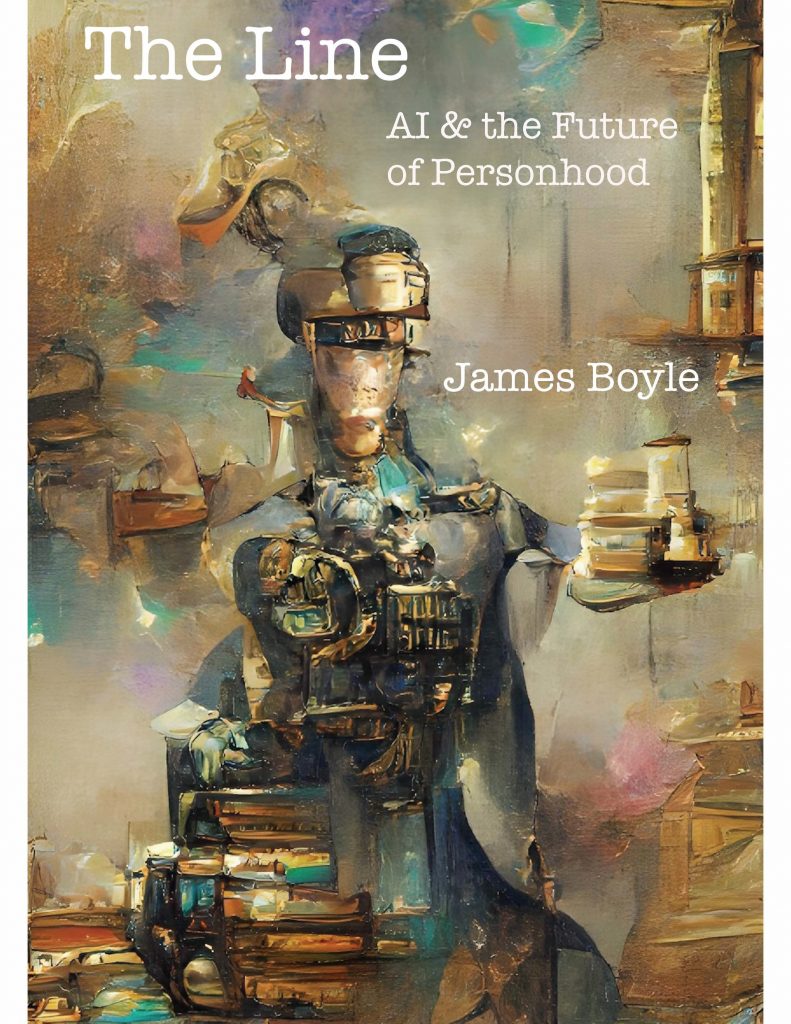

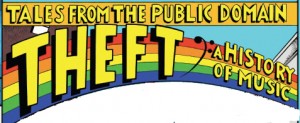


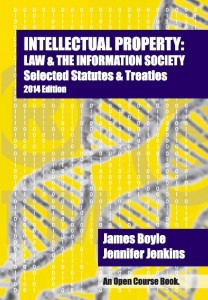
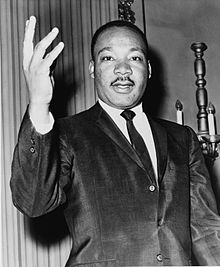
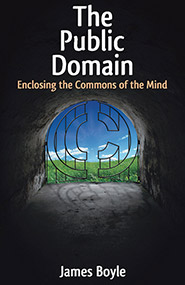
Thanks for a good article. You have hit the nail on the head with this statement:
“[L]ittle attention is being paid to empirical evidence, and it is not clear which way the norms will tip. Our attitude should be to demand rigorous empirical and economic study before we create or extend legal monopolies. Expansive new rights over emerging technologies may be necessary to encourage innovation, but the case must be made on facts, not faith.”
We can debate the abstractions and pros and cons about business method patents, software patents, fostering or inhibiting innovation, etc. until we are blue in the face and get nowhere with the fundamental question: how do you make and apply laws to promote the progress of science and the useful arts? Even though I make my living from the IP system, I and most of my clients would prefer a more rational, evidence- and impact-based system rather than the unworkable abstractions of “obviousness” and “novelty” and “patentable subject matter.” The empirical evidence is scant and I wish all the professorial types and patent-bashers would get busy trying to come up with some good metrics and urge the Congress to come up with meaningful reform. We really need to focus the debate on the evidence and its quality.
Thanks again for a good article.
[…] and other related issues of intellectual monopolisation. We shall start with a recommendation of this excellent writeup which goes under the heading “What Intellectual Property Law Should Learn from […]
“For better or for worse, property rights came fully to software at a point when no one would have thought of claiming the most fundamental building blocks—patenting the idea of a Turing machine or the precepts of Boolean algebra.”
Perhaps not but fundamental building blocks built upon those fundamental building blocks seem to have continued to be patentable and become patented in the infinitely vast field of information processing. Maybe synthetic biology is not so abstract and all-encompassing and could escape the worst ravages of the patent system after a few decades.